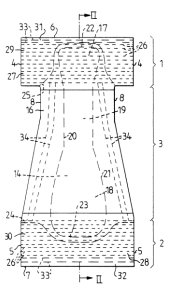Argument preview: Stakes are high as justices consider laches as a bar to patent damage suits

on Oct 25, 2016 at 1:49 pm

Petrella II. Or is it? That’s a pretty good summary of the briefing in the big patent case from the November argument session, SCA Hygiene Products v. First Quality Baby Products. Three terms ago in Petrella v. Metro-Goldwyn-Mayer, a divided court held that the equitable defense of laches, or unreasonable delay in making a claim, could not be interposed to bar damage claims under the Copyright Act. Justice Ruth Bader Ginsburg’s strongly worded opinion in Petrella treated the issue as a straightforward conflict between vague judicial discretion and specific statutory rules, suggesting that when Congress decides to create a specific statute of limitations, courts have no business barring actions as untimely that are filed before the end of the congressionally specified period.
The issue in SCA Hygiene is whether Petrella applies to patents. And if you take seriously the vigor of the court’s discussion in Petrella, which dismissively rejected every contrary argument based on history and practice, then SCA Hygiene should have an easy time of it. The Patent Act, like the Copyright Act, sets out a specific time period during which a plaintiff can sue for damages for patent infringement (six years), and nothing on the face of the statute suggests that Congress intended courts to shorten the six-year period on a case-by-case basis. Viewed through the Petrella lens, the Federal Circuit’s decision here is just another one of those cases in which the Federal Circuit adopts a special rule for patent law, ignoring the traditional doctrinal rules that apply in other areas. We all know how those cases turn out in the Supreme Court – harshly worded reversals, like Octane and Highmark two terms ago.
But you’d be selling the case short if you think it will be nearly that simple. For one thing, the defendants (First Quality Baby Products and related companies) present a convincing case for the proposition that courts for half a century before the 1952 adoption of the Patent Act had been relying on laches as a basis for dismissing suits seeking damages for patent infringement. The Petrella court confronted no such tradition. The routine application of laches in patent cases for such a long period of time provides powerful support for the defendants’ reliance on a common statutory interpretion argument – that Congress’ adoption of the Patent Act without language rejecting that tradition brought the rule into the statute implicitly.
Some excellent amicus briefs buttress the defendants’ position. For example, the Electronic Frontier Foundation and Public Knowledge emphasize the particular problems that long-delayed filings pose for technology firms. For one thing, in patent cases (unlike copyright cases), the defendants well might have independently invented the plaintiffs’ technology; they thus might be wholly unaware of the competing patent and accordingly have no reason to retain records supporting the circumstances of the invention. Moreover, because of the relatively distributed nature of innovation in the software and Internet areas, technological advances often are not documented in the organized and methodical way characteristic of more traditional industries. Because it is most commonly the defendant that would need to locate and present that evidence, delayed suits are systematically more problematic for defendants.
Another amicus brief from a large group of technology companies headed by Dell emphasizes how the costs of becoming “locked-in” to a particular product design rise exponentially with delayed suits – making it much more expensive to work around the patented technology after the fact than it would have been many years earlier when products first were designed. The best section of that brief is a series of five detailed case studies, real-life examples illustrating the evidentiary and economic prejudice that delayed litigation can impose on defendants. I expect that material will give at least some of the justices pause before reflexively extending Petrella to patents.
My guess is that the three dissenters in Petrella (Chief Justice John Roberts and Justices Anthony Kennedy and Stephen Breyer) should be easy votes for the defendants here. The question will be whether anything the defendants and their amici say can pry away a vote from the five remaining members of the Petrella majority (the late Justice Antonin Scalia having been the sixth). The argument should tell us a great deal about that.


